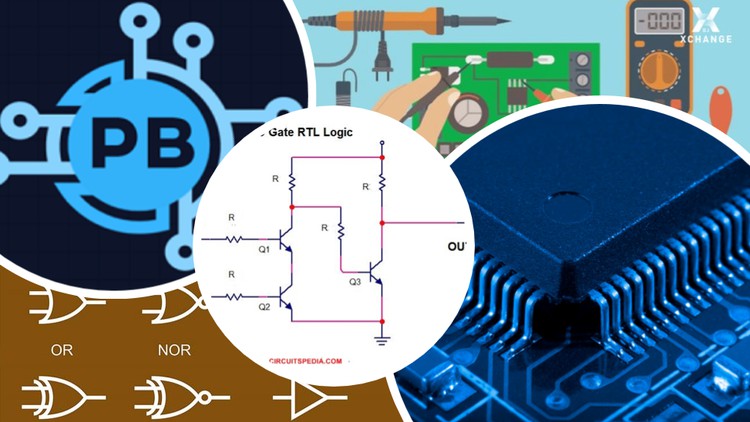
Learn Digital Electronics & Circuit Simulation on Proteus Software Recommended for E&E, Robotic & Biomedical Engineers
What you will learn
Basic working of BJT and Diodes
Difference between Analog and Digital Electronics
What is Logic Gates and different types of logic gates
Minimization of Logic gates
Number Systems
Description
Before enrolling in this course I hope that you must be having a basic idea about the following concepts, as those concepts are pre-requisite to this course
1) Basic Idea About Current Electricity
2) What are semiconductors and their significance in electronics
3) In-depth knowledge about Diodes, Transistors especially BJTs, etc.
If you don’t have any idea about all these concepts you can look forward to enrolling in all of my previous four courses where I had explained all the above concepts in depth.
This course focuses on clearing the basic concepts or fundamentals of digital electronics. You will be learning the following topics in this course
1) Logic Gates
2) Minimization Techniques
3) Number Systems
Now you may think that these are easy topics and can be completed within three to four hours but since you are learning from me you can expect to learn something
extraordinary concepts plus techniques and let me tell you that these three topics themselves will consume more than seven-plus hours so you can guess what this course can deliver.
You will not only learn the concepts theoretically but you will also implement certain things on the proteus and on the thinkercad software.
Outcomes Of the Course:-
1) Studying different logic gates and implementing them on proteus and thinkercad software.
2) Students will be able to minimize any logical expressions of 3-variable
3) Studying number system
Content